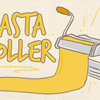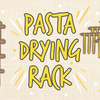How To Reheat Pasta: The Chef's Guide

Reheating pasta often goes wrong, resulting in mushy, gluey pasta when done incorrectly. This is due to the loss of the firm texture that holds the pasta in shape, often ending up as clumps of pasta mixed with the uneven sauce. This guide will take you through the various ways you can warm your pasta without destroying its texture and flavor, as well as the various pasta varieties that can be reheated in the kitchen.
Not Much Time? Skip To What You'd Like To Learn...
-
WHAT IS PASTA?
-
WHY REHEAT PASTA?
-
DOES REHEATING PASTA RUIN THE TASTE?
-
METHODS OF REHEATING PASTA
-
BEST METHOD OF REHEATING FOR EACH TYPE OF PASTA
-
REHEATING PASTA WITH SAUCE METHODS
-
TIPS FOR REHEATING PASTA WITHOUT DRYING IT
-
PASTA FOR MEAL PREP
-
PICKING PASTA FOR MEAL PREP
-
RECOMMENDED PASTA VARIETY FOR MEAL PREPS
-
Common Questions
What Is Pasta?
Pasta is an Italian dish consisting of dough that’s prepared using durum wheat and water. The
The dough gets extruded or stamped into the required shapes and can be cooked by boiling it in water.
Pasta can be divided into two major categories: dried and fresh pasta. Dried varieties are
produced and dried commercially via the extrusion process. New varieties, on the other hand, are prepared by hand as per the traditional recipe. Further reading material: https://en.wikipedia.org/wiki/Pasta
Why Reheat Pasta?
Reduce Carbs Content - Freshly cooked pasta is not the healthiest meal out there due to its high carbohydrate and scratch content. However, upon cooling, the starch molecules clump up together, becoming ‘resistant scratch.’ This variety of scratch is much harder to digest, and therefore, it does not get immediately broken down into carbs in the small intestine. Instead, it proceeds into the large intestine where it acts as dietary fiber. The end result is that you will feel more full for longer after consuming reheated pasta, unlike freshly cooked ones, which results in a dramatic rise in blood sugar upon getting digested. Further reading material: bbc.co.uk.
Reducing Blood Sugar Spikes - When you consume a sugar-rich meal, the carbs will get broken down immediately in the small intensive and absorbed into the bloodstream resulting in a drastic spike in the blood sugar level. While the body will automatically scale up insulin production to keep the blood sugar levels under control, such drastic spikes are not healthy and often lead to weight gain and contribute towards insulin resistance, which eventually develops into diabetes. Consuming reheated pasta drastically reduces the number of carbs released after digestion compared to freshly cooked pasta.
Adding Flavor - While reheating your pasta, you will have to add extra sauce to prevent it from clumping up. This is the perfect opportunit[y to introduce the desired flavor to your cold pasta. It’s important to note that while adding extra flavoring pasta sauce not to overdo it; otherwise, the pasta will just break up into a thick mess. Also, avoid introducing non matching flavors, which might make your reheated pasta too tasteless to eat.
Lower The Risk Of Stroke - Reheating pasta that’s flavored with tomato sauce results in increased antioxidant content, which gets absorbed in the body. This is due to the presence of lycopene antioxidants in tomatoes. Upon reheating, these molecules become restructured, making them even more readily available for absorption. Scientific studies have shown that consuming reheated tomato sauce can reduce the probability of developing a stroke by as much as 55%. Further reading material: sciencedaily.com.
Does Reheating Pasta Ruin The Taste?
When reheated properly, the pasta will not lose its taste, but if it gets overcooked in the process of reheating, its flavor will take a beating resulting in mismatched taste notes. Another reason why the pasta taste might change while reheating is the use of too much water to reboil the pasta leading to over diluted pasta sauce that’s a rather bland tasting.
Methods Of Reheating Pasta
Microwave
1. Into a microwave-safe container, add the cold pasta and splash a little bit of water on it
2. Set the microwave to midrange temperature and heat the container of pasta for 1-minute intervals while stirring the pasta gently with each cycle.
3. Give the container a shake after the pasta has heated up to loosen any pasta that might be stuck on the container’s walls.
Boiling
1. Bring a large pot halfway filled with salty water to a boil under medium heat.
2. Use a large colander to deep the cold pasta into the billing salty water for up to 30 seconds before gently shaking off the excess water.
3. If a colander cannot be obtained, you can simply remove the pot of boiling salty water from the fire and deep the cold pasta in it for 2 minutes before draining them.
Oven
1. Pack the cold pasta into an oven-safe shallow bowl and sprinkle leftover pasta sauce on it.
2. Cover the shallow bowl tightly with an aluminum foil.
3. Preheat the oven to 350°F and cook the pasta for about 20 minutes or until heated through.
Best Method Of Reheating For Each Type Of Pasta
Baked Pasta
1. Pack the cold baked pasta into a microwave-safe dish and sprinkle a few drops of water or milk on it.
2. Cover the dish airtight and set the microwave to medium heat setting
3. Heat the baked pasta for 5 minutes before taking it out of the dish and serve immediately.
Noodles
1. Bring a large pot halfway filled with water to a boil.
2. Add salt and additional flavors to taste.
3. Place the noodles on a large colander and bring it to hover on the source of the boiling water for 30 seconds.
4. Remove the colander from the water and serve the now hot pasta.
Reheating Pasta With Sauce Methods
Saucepan Method
1. Pour the pasta with sauce into a saucepan and heat over medium-low heat until it reaches the required temperature
Oven Method
1. Pack the pasta with sauce into a baking dish and seal tightly with an aluminum foil
2. Preheat the oven to 350°F for 5 minutes or until hot enough.
Microwave Method
1. Pack the pasta with sauce into a microwave-safe dish and seal it airtight
2. Set the microwave to medium heat setting and heat the pasta in 1-minute intervals while stirring after each cycle.
Pasta From A Restaurant
1. Pack the pasta from the restaurant into an oven-safe dish and cover tightly with an aluminum foil
2. Preheat the oven to 350°F and cook the pasta for 20 minutes or until hot enough.
Tips For Reheating Pasta Without Drying It
Use The Right Method Of Reheating - When working with cold pasta it's important to stick to the right method of reheating each variety to avoid overheating the pasta which results in dried and cracked pasta strands.
Moisturize The Pasta Whenever Possible - Sprinkling a few drops of water on to the pasta before reheating it provides moisture that transfers heat across the pasta while also keeping the individual pasta strands moist and separate.
Do Not Over Cook - Overcooking pasta while reheating it is a sure way to end up with mushy pasta. This is due to the excess removal of moisture from the pasta strands leaving the starch molecules to bind the various strands of pasta.
Seal The Container Whenever Possible - Sealing the container of pasta, before reheating it in the oven or microwave, traps the moisture within the container for faster heating while also retaining the moisture. This ensures that the individual pasta strands remain separate.
Pasta For Meal Prep
Meal prepping refers to the concept of preparing meals forehand, so they are ready to consume when needed instead of having to wait for the preparation process every time you need to eat.
Picking Pasta For Meal Prep
Pasta is easy to prepare and less cumbersome to reheat when needed, thus making it a perfect candidate for a meal prep routine. While picking pasta varieties for meal preps, you should consider going for thicker varieties as they hold their texture and shape much better than thin varieties. Pasta meal preps can be kept in the fridge for up to 4 days while still retaining the flavor and texture that’s required to adhere to the sauce. These meals can then be reheated within the microwave or oven whenever needed.
Recommended Pasta Variety For Meal Preps
Rigatoni - Rigatoni is tube-shaped pasta that comes in varying diameters and lengths and is originally from Italy. Rigatoni characteristically has ridges along the entire length and depending on the manufacturer. They may also have swirling patterns around the tubes of pasta. The adhesive surfaces of rigatoni make better surfaces for grated cheese and sauces.
Macaroni - Macaroni is dry pasta that’s shaped like narrow tubes that are cut in short lengths and have a slight curve. Macaroni has an absorbent surface that easily adheres to thick sauces and is often served with Conchiglie. It is a type of Italian pasta with a characteristic shell-like shape; in fact, the name translates to ‘seashells.’ Conchiglie is available in both plain durum wheat variety and colored varieties, which use tomato extract, spinach extract, and squid ink. Conchiglie is frequently used in pasta salads with meat sauces.
Lumache - Lumache is a shell-shaped pasta variety that’s perfect for thin and thick sauces. Lumache has a hollow interior that’s usually filled with ricotta, mozzarella, and spinach before baking it in the oven. Cheese and tomato-based sauces.
Common Questions
Is It Ok To Reheat Cooked Pasta?
Yes, it’s perfectly okay to reheat cold pasta as long as you do it the right way, depending on the specific type of pasta.
Can You Eat Leftover Pasta Cold?
While you can eat leftover pasta cold, it’s not recommended as the food may have become contaminated during storage, thus the need to reheat it before consuming.
Can You Reheat Pasta Twice?
It’s possible to reheat pasta twice, but it’s not recommended as it will lose most of its texture and clump up.
Do You Put The Pasta In Cold Water After Cooking?
You should never rinse pasta after cooling as it will lose its texture, making it hard to adhere with the sauce to.






